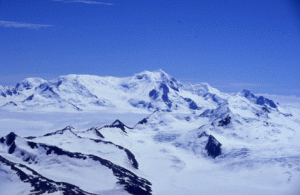 Two new studies by a University of Rochester researcher show that mountain ranges rise to their height in as little as two million years--several times faster than geologists have always thought. Each of the findings came from two pioneering methods of measuring ancient mountain elevations, and the results are in tight agreement.
Two new studies by a University of Rochester researcher show that mountain ranges rise to their height in as little as two million years--several times faster than geologists have always thought. Each of the findings came from two pioneering methods of measuring ancient mountain elevations, and the results are in tight agreement."These results really change the paradigm of understanding of how mountain belts grow," says Carmala Garzione, assistant professor of earth and environmental sciences and co-author of both papers. "We've always assumed that the folding and faulting in the upper crust produced high elevation mountains. Now we have data on ancient mountain elevation that shows something else is responsible for the mountains' uplift."
Garzione's recent work suggests that the Andes shot up between 10 million and 7 million years ago.
If the Andes rose a dramatic kilometer per million years as the studies suggest, scientists can now assign a very specific - and very controversial - process to their uplift.
"Deblobbing" may not sound like a very scientific word, but it's the term given to a dense root beneath the Earth's crust--a blob--that becomes unstable and begins to flow downward into the earth's mantle under the force of its own mass, until it detaches. When two tectonic plates collide, such as the Nazca oceanic plate in the southeastern Pacific colliding with the South American continental plate, the continental plate usually begins to buckle. Floating on a liquid mantle, the plates press together and the buckling creates the first swell of a mountain range.
Below the crust, however, there also is a kind of buckling going on in the solid portion of the upper mantle. This dense mantle root clings to the underside of the crust, growing in step with the burgeoning mountains above. This dense root acts like an anchor, weighing down the whole range and preventing it from rising, much like a fishing weight on a small bobber holds the bobber low in the water. In the case of the Andes, they swelled to a height of about one kilometer before the mantle root beneath them disconnected and sunk into the liquid mantle. The effect was like cutting the line to the fishing weight--the mountains suddenly "bobbed" high above the surrounding crust, and in less than 3 million years, they had lifted from one kilometer to roughly four.
This process had been proposed since the early 1980s, but it has never stood up to scrutiny because these techniques to estimate surface elevation have only been recently developed.
For more details.